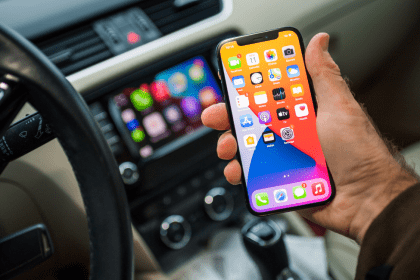Your resume is probably fighting for attention against thousands of others that sound exactly like it, and you don’t even realize why. While you’ve been carefully crafting bullet points and tweaking formatting, artificial intelligence has quietly invaded the job application process from both sides, creating a bizarre arms race between robot resume writers and robot resume readers.
AI resume builders are churning out polished, keyword-optimized documents faster than you can say “results-driven professional,” while AI applicant tracking systems are scanning through applications looking for specific patterns and phrases. The result is a homogenized landscape where every resume reads like it was written by the same overly enthusiastic robot.
The irony is brutal: in an attempt to make resumes more appealing to machines, we’ve made them less appealing to humans. Hiring managers are drowning in a sea of identical-sounding applications that hit all the right keywords but reveal nothing about the actual person behind the document.
Robot writers are creating resume template zombies
AI resume generators have democratized “professional” resume writing, but they’ve also created an epidemic of identical documents. These tools pull from the same databases of buzzwords, action verbs, and industry jargon, resulting in resumes that read like they were assembled on a factory line.
Every AI-generated resume starts with some variation of “results-driven professional with proven track record of exceeding expectations.” They all claim to be “detail-oriented team players” who “leverage synergies to drive innovation and deliver impactful solutions.” The language is so generic it could apply to anyone from a software engineer to a sandwich artist.
These tools optimize for keyword density and ATS compatibility, but they completely miss the nuances that make a candidate memorable. They can’t capture your unique problem-solving approach, your unconventional career path, or the specific way you’ve contributed to previous roles.
The worst part is that many job seekers don’t realize their “professionally written” resume is virtually identical to hundreds of others being submitted for the same position. What they think is giving them an edge is actually making them invisible.
ATS systems are getting smarter but more paranoid
Applicant tracking systems have evolved beyond simple keyword matching into sophisticated AI programs that analyze writing patterns, evaluate career progression logic, and even assess personality traits based on word choice and sentence structure. They’re looking for inconsistencies, gaps, and red flags that might indicate a problematic candidate.
Modern ATS systems can detect when resumes have been heavily edited by AI tools, and some are starting to flag applications that seem too polished or generic. The very technology that’s supposed to help you get past the robots is actually making the robots more suspicious of your application.
These systems are also becoming better at identifying authentic experiences versus generic descriptions. They can spot when someone claims expertise in areas where their background doesn’t support it, or when job descriptions sound too perfect to be realistic.
The paradox is that while ATS systems are designed to find the best candidates, they’re often programmed with biases toward certain types of experience, education, or career paths that may not actually predict job performance.
Human hiring managers crave authentic stories
Behind every ATS system is a human hiring manager who’s tired of reading the same generic accomplishments phrased in slightly different ways. They’re looking for candidates who can tell a compelling story about their career journey, explain their decision-making process, and demonstrate genuine passion for the work.
Real hiring managers want to understand not just what you’ve done, but how you think, what motivates you, and how you handle challenges. They’re looking for signs of creativity, resilience, and cultural fit that can’t be captured by keyword optimization or generic achievement statements.
The candidates who stand out are those who can articulate their unique value proposition in human terms rather than corporate buzzwords. They tell specific stories about problems they’ve solved, relationships they’ve built, and lessons they’ve learned.
Authenticity has become a competitive advantage precisely because it’s so rare in the current resume landscape. When everything else sounds the same, the applications that feel genuinely human immediately capture attention.
The keyword optimization trap is backfiring
Everyone knows that resumes need to include relevant keywords to get past ATS systems, but the obsession with keyword stuffing has created documents that are optimized for machines but terrible for human readers. Many resumes now read like technical manuals rather than professional narratives.
The problem with purely keyword-driven resumes is that they sacrifice storytelling for searchability. You end up with a list of skills and accomplishments that technically match the job description but don’t explain why you’re uniquely qualified for the role.
Smart job seekers are learning to integrate keywords naturally into compelling narratives rather than just dumping them into skills sections or forcing them into awkward bullet points. This approach satisfies both ATS requirements and human readers.
The most effective resumes use industry terminology authentically, incorporating relevant keywords into specific examples and achievements rather than treating them as boxes to check.
Soft skills and personality are becoming premium differentiators
As technical skills become more commoditized and easier to acquire through online learning, soft skills and personality traits are becoming more valuable to employers. However, most AI-generated resumes completely fail to convey these crucial qualities.
Communication style, leadership approach, problem-solving methodology, and team collaboration preferences can’t be effectively communicated through generic bullet points. These qualities emerge through specific examples, storytelling, and even the way you structure and present information.
Hiring managers are increasingly looking for evidence of emotional intelligence, adaptability, and cultural fit, qualities that require human insight to identify and articulate effectively. AI tools simply can’t capture the nuanced ways these traits manifest in different professional contexts.
The candidates who succeed are those who can demonstrate their soft skills through concrete examples and authentic communication rather than just claiming to possess them.
Strategic human touches that make resumes memorable
The key to standing out in an AI-dominated landscape is knowing where and how to inject authentic human elements that machines can’t replicate. This starts with crafting a compelling professional summary that tells your unique story rather than listing generic qualifications.
Use specific numbers and metrics, but explain the context behind them. Instead of saying you “increased sales by 30%,” explain the specific challenges you faced, the approach you took, and why your solution was effective. This level of detail and storytelling is difficult for AI to generate authentically.
Include a brief section about your professional philosophy or approach to work. This gives hiring managers insight into how you think and operate, information that’s much more valuable than another list of technical skills.
Consider adding a section about relevant personal projects, volunteer work, or interests that demonstrate skills or qualities relevant to the role. These details humanize your application and provide conversation starters for interviews.
Building a future-proof personal brand
As AI continues to evolve and become more sophisticated, the most successful professionals will be those who can clearly articulate their unique value proposition in ways that can’t be replicated by algorithms. This means developing a strong personal brand that goes beyond technical qualifications.
Focus on building and communicating your unique combination of skills, experiences, and perspectives rather than trying to fit into a standard template. The goal is to become known for specific strengths or approaches that are distinctly yours.
Develop a consistent voice and messaging across all your professional materials, from your resume to your LinkedIn profile to your interview responses. This consistency helps create a memorable impression that sticks with hiring managers.
Stay current with industry trends and be able to speak knowledgeably about how your role and industry are evolving. This demonstrates forward-thinking and adaptability that AI tools can’t effectively simulate.
The future belongs to professionals who can leverage technology while maintaining their human edge, using AI tools to enhance their efficiency while preserving the authenticity and creativity that make them irreplaceable.
















